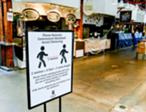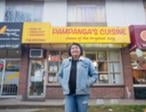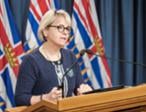Despite having an estimated 100 to 200 homeless people, the town of Vanderhoof in northern British Columbia has just four shelter beds—all reserved for women escaping physical abuse or drug addiction.
With temperatures reaching minus 30 degrees Celsius in the winter, any homeless man or woman who can’t secure one of those four beds has to do whatever they can to get inside. It can often lead to dangerous circumstances.
“A lot of women have to compromise their own safety and the safety of their children in order to find a place to stay,” says Randene Wejr, executive director of Nachako Valley Community Services. “There’s not a whole lot of choice with this kind of weather.”
In the summer the homeless can squat in a few abandoned houses the locals call “Jungle Camps.” But in winter Vanderhoof’s homeless are mostly at the mercy of whoever will give them a couch to crash on. Since they are so hidden, social workers say it is almost impossible to provide the necessary supports.
“Our homelessness is invisible,” says Sylvia Byron, agency coordinator for the Omineca Safe Home Society, which runs the women’s shelter beds. “But we still struggle. We struggle with mental illness and drug addiction.”
Both Byron and Wejr say the number of homeless in Vanderhoof started becoming a much bigger problem about two years ago. While many migrate to Prince George, those who stay are predominantly young and/or First Nations, with many battling drug and alcohol addiction.
However, since many people in this conservative Christian town don’t believe they have any homeless people, it is difficult for social workers to raise awareness and resources.
“This is a very religious, closeted community,” says Wejr. “And since the homeless are not visible, they don’t see the problem.”
The federal government and a number of private fundraisers are helping Omineca build a four-unit supportive housing complex for women in transition. The site is almost finished, but after that, no other social housing is planned.
Byron says the town’s vacancy rate is near zero, and the lowest rents average $450 a month. BC Housing provides roughly 30 units of social housing in Vanderhoof, but Byron says they refuse anyone without children. Single men simply have nowhere to go.
“It’s reached an absolute frustration point,” says Byron. “We hear all the time, ‘You have a lovely shelter for women, but what about the men? Who supports the men?’ Shelter beds for men do not exist.”
Outside the Grand Trunk Pub, Arthur, an aboriginal man in his early 30s, can’t understand why Vanderhoof has no shelter beds. When the police drop him off downtown in the early morning hours after a night in the drunk tank, or when he can’t hitch a ride back to the Saikuz reserve (it’s a two-hour walk from town), he has to scramble to find a place to sleep.
“How hard is it to put down a couple mattresses?” he asks. “It doesn’t make no sense.”
Sean Condon is the editor of Megaphone Magazine. He is filing a series of reports for The Tyee about homelessness in northern British Columbia.










What have we missed? What do you think? We want to know. Comment below. Keep in mind:
Do:
Do not: